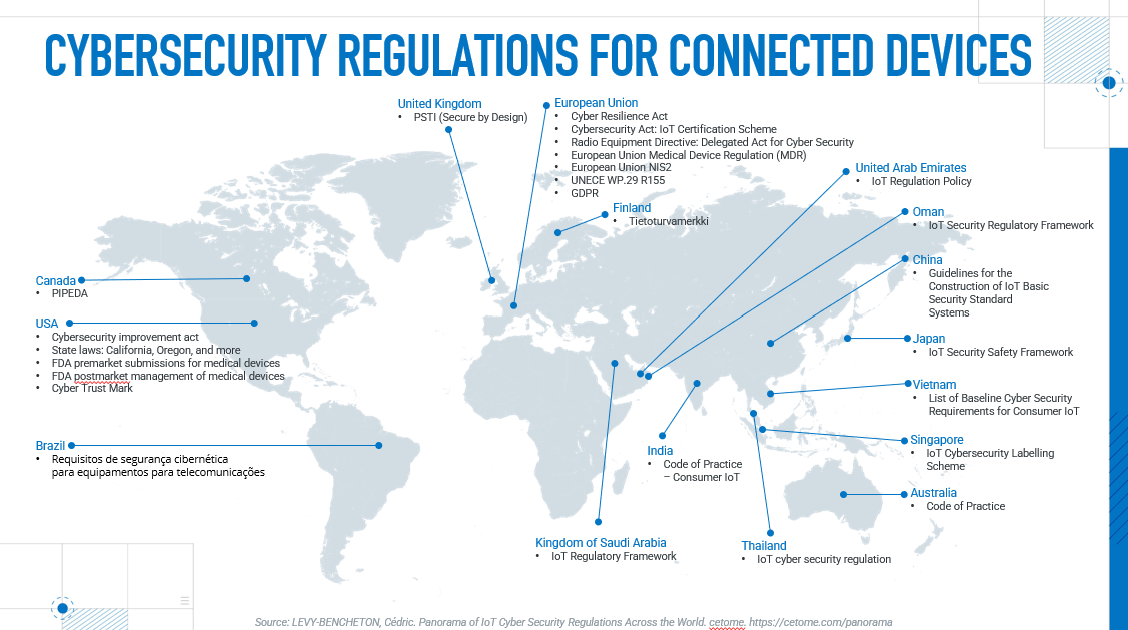Get familiar with how DigiCert® Device Trust Manager helps OEMs comply with the growing list of IoT cybersecurity regulations worldwide.
DigiCert® Device Trust Manager helps OEMs comply with the growing list of IoT cybersecurity regulations worldwide. These regulations often require certificates for device identity and authentication, strong encryption, vulnerability monitoring, over-the-air updates, and more. Device Trust Manager simplifies compliance with industry standards and regulations, ensuring your IoT devices meet the necessary security requirements.
Key compliance areas include:
NIST standards: Supports identity proofing, authentication levels, and encryption via FIPS 140-2/140-3.
IETF RFC compliance: Ensures secure communication through adherence to cryptographic and protocol standards.
Sector-specific compliance: Meets regulatory requirements for healthcare (FDA regulations), automotive (UNECE WP.29), and industrial infrastructure (ISA/CIP).
Navigate global cybersecurity compliance with DigiCert
As regulatory landscapes evolve, DigiCert offers tailored guidance to help organizations meet critical cybersecurity standards across regions:
Explore DigiCert’s approach to meeting the EU Cyber Resilience Act requirements by visiting the CRA Compliance for Connected Devices guide. It outlines key obligations, lifecycle expectations, and how to avoid costly penalties while ensuring market readiness before 2027.
Explore how DigiCert helps medical device manufacturers meet FDA cybersecurity expectations by visiting the FDA Device Compliance: Secure by Design guide. It covers updated submission requirements, risk documentation, and how to embed security throughout the device lifecycle.
Discover how DigiCert's Device Trust Manager and TrustCore SDK assist with Industrial IoT compliance across frameworks like the EU Cybersecurity Act and the US IoT Security Act. These solutions address key requirements such as secure device identity, encryption, patching, and governance, as outlined in Navigating Compliance in the Industrial Internet of Things.
